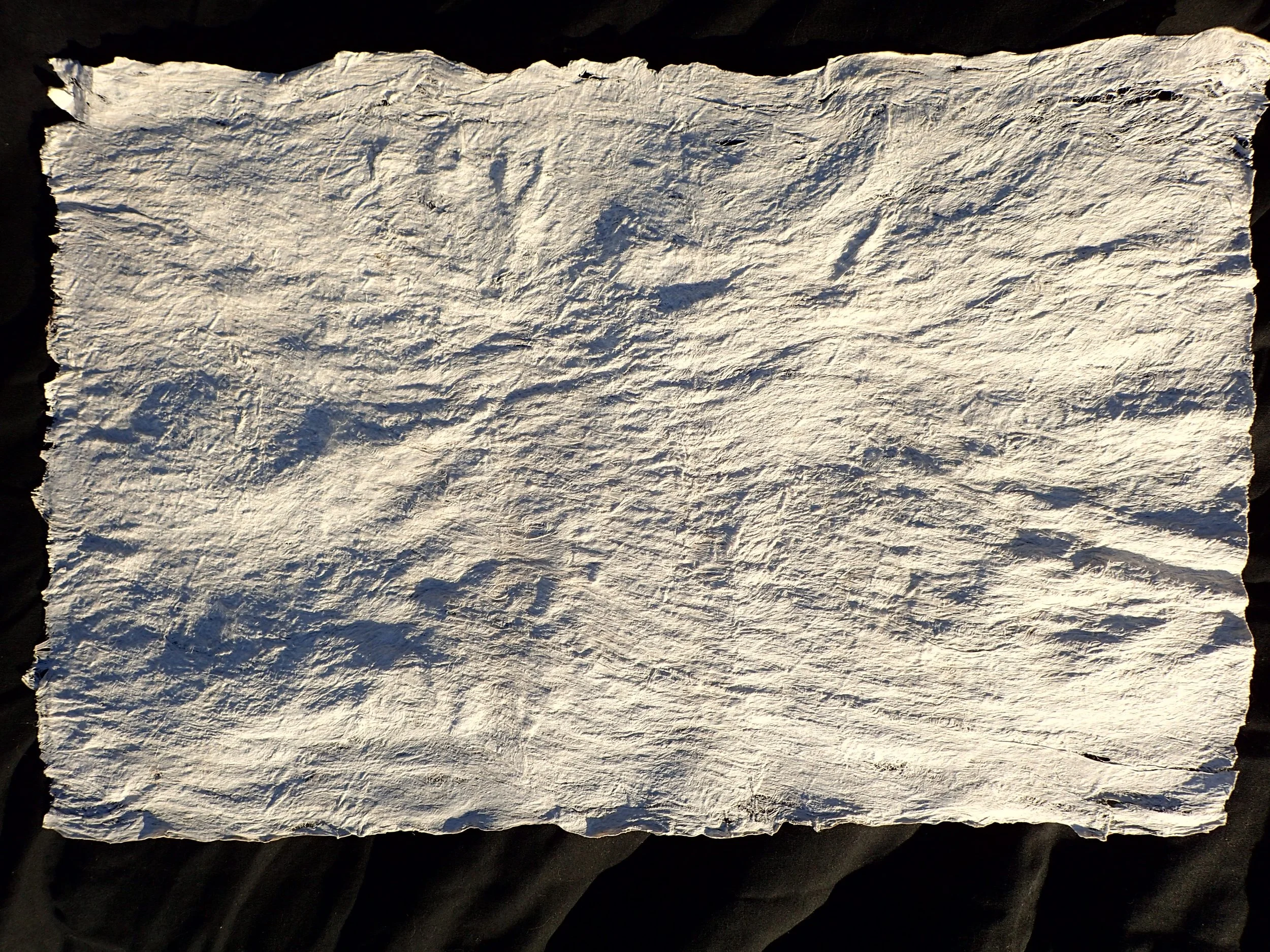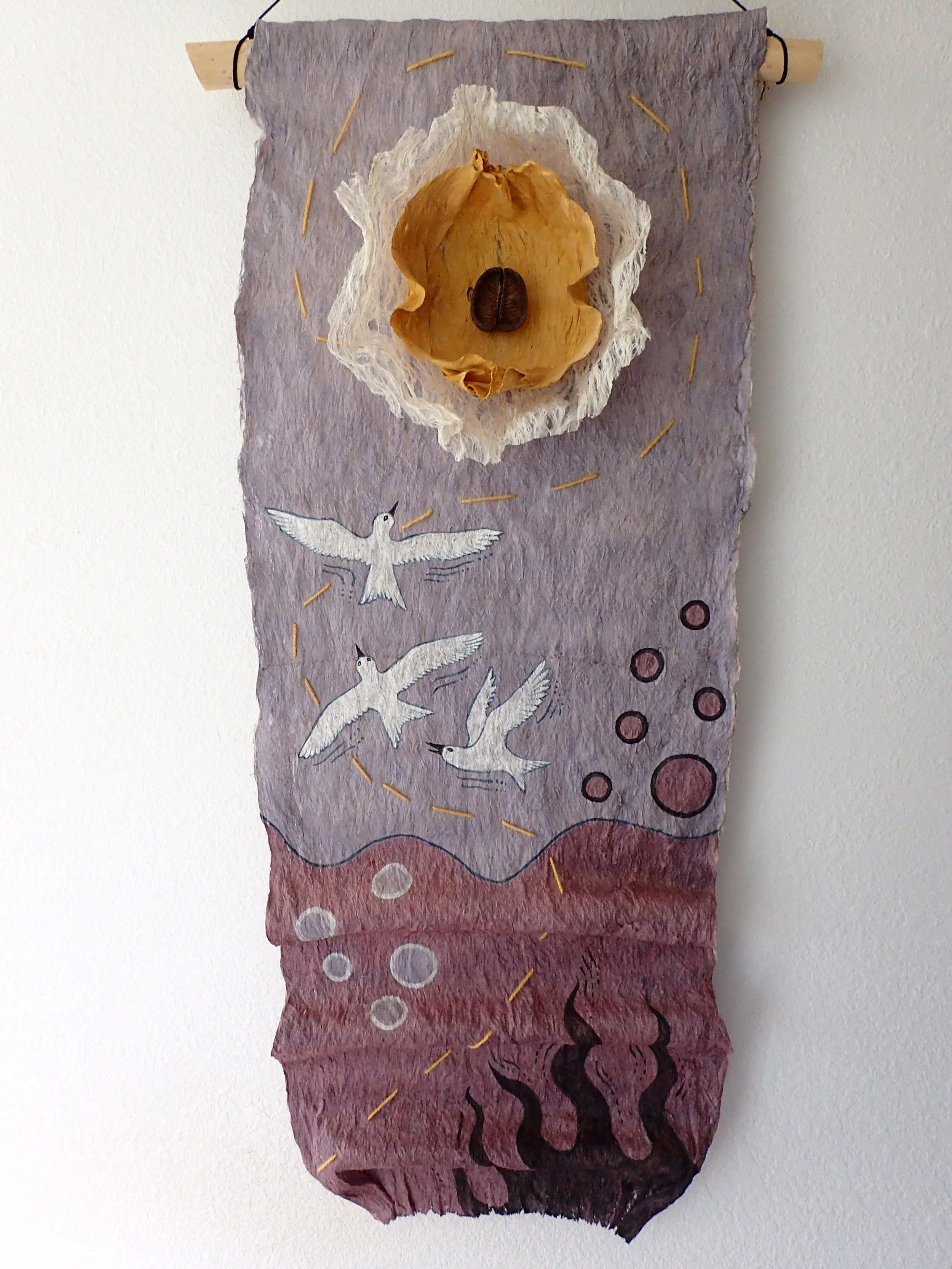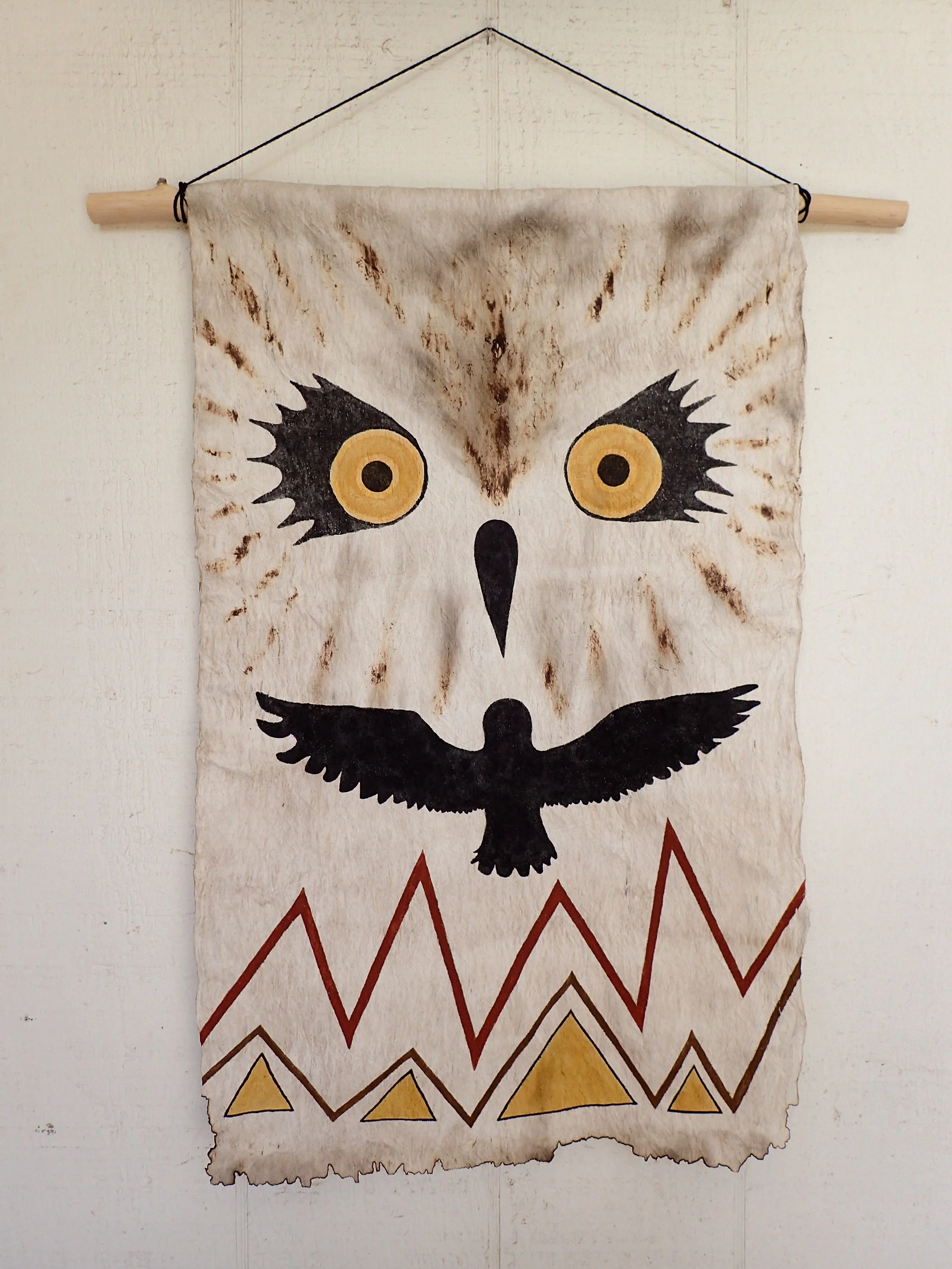
Kapa
For thousands of years, kapa (Hawaiian barkcloth) was the fabric of Hawaiʻi, used for everything from clothing to bedding, keiki swaddling to funeral shrouds. Towards the end of the 19th century, cherished historian Samuel Kamakau lamented, “All are dead who knew how to make coverings… and adornments… that made the wearers look dignified and proud and distinguished” (Na hana a ka poʻe kahiko, 1976). During the time of the Hawaiian Renaissance, several pioneering Kanaka ʻŌiwi women (such as Malia Solomon, Pua Van Dorpe, and Marie McDonald) revitalized this practice, bringing it back from dormancy. Today, there are growing numbers of kapa makers of all ages!
To make kapa is to engage with patience and slowness. Kapa is made from the inner fibers (bast) of the wauke tree (Broussonetia papyrifera). Once the trees are at least one inch in diameter, they are harvested and the kae (bast) stripped from the heartwood. Kae are retted in kai (salt water) and then wai (fresh water) until soft. They are then beaten using a hohoa (rounded wood beater) on a large pōhaku (stone) until the fibers spread. These beaten basts are called moʻomoʻo. Several moʻomoʻo can be laid atop one another on a kua lāʻau (wood anvil) and felted together by beating with an iʻe kuku (carved wood beater). The result is kapa! Finished kapa are then softened and decorated with plant dyes and local earth pigments, such as ʻalaea (red soil).
My kapa are crafted from wauke grown at my kumu Roen Hufford’s farm in Waimea. Each kapa is a story unto itself and a canvas carrying the messages of the plants and soils that color it.
Iwakālua hāhālua liʻiliʻi (2021)
He nani ka pilialoha (2022)
Kū kiaʻi mauna (2019; sold)
Mind Matters (2023)
ʻOpihi, Clinging (2019; sold)
Eyes on Pōhakuloa (2023)
Hānau ka Weke noho i kai, kiaʻi ia e ka Wauke noho i uka (2019; sold)
Untitled commission (2019)
Pua ka wiliwili nanahu ka manō (2020; sold)
Untitled moʻomoʻo (2019; sold)









